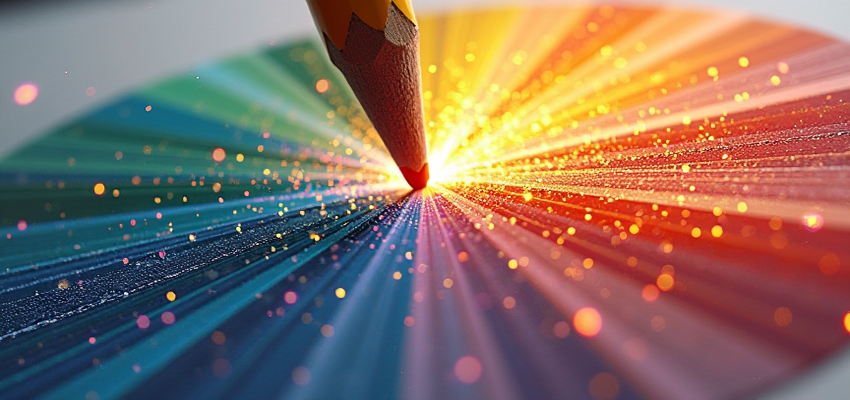Beyond Keywords: Leveraging Art Theory for Superior Al Image Generation
Author's Note: This guide originated somewhat unconventionally. It was initially written as a detailed input for an AI prompting assistant programme I wrote, Details on that can be seen here, designed to give the AI comprehensive context for generating diverse prompts. However, the resulting text proved to be surprisingly thorough. Believing it might be valuable for those just starting out, I decided to publish it as a beginner's guide to crafting more complex prompts.
1. Introduction: Elevating Al Art with the Power of Theory
The advent of sophisticated text-to-image Al models like Flux, SDXL, Illustrious, and HiDream has democratized visual creation, allowing users to generate complex imagery from textual descriptions. However, many interactions rely on intuitive or relatively basic prompts, often leading to results that are visually interesting but lack the control, coherence, or aesthetic depth found in traditional art. There exists an untapped potential to significantly elevate the quality and intentionality of Al-generated art by deliberately applying the foundational principles and theories that have guided human artists for centuries. While Al automates the technical execution of image creation, human creativity, informed by artistic knowledge, remains paramount in directing the Al towards producing truly compelling and sophisticated visuals. The increasing power and accessibility of these tools necessitate a deeper understanding of visual language; merely knowing how to write a prompt is becoming less important than knowing what to prompt based on established artistic principles. This understanding becomes a key differentiator, enabling creators to move beyond generic outputs.
This article aims to bridge the gap between the capabilities of modern Al image generators and the rich knowledge base of art theory. It serves as a practical, actionable guide designed for Al art enthusiasts and creators seeking to improve their craft. By translating core concepts from composition, color theory, lighting, perspective, and artistic styles into effective prompting strategies, users can gain greater control over the Al's output, leading to images that are not only technically proficient but also aesthetically refined and aligned with a specific artistic vision. Or you can just give this article to an ai and tell it to generate prompts using the information in it. The focus will be on moving beyond simple descriptions towards intentional artistic direction, covering fundamental elements and principles, specific techniques, prompt crafting strategies including negative prompts, and brief considerations for the target models (Flux, SDXL, Illustrious, HiDream).
2. The Language of Art: Core Principles for Al Prompts
Understanding the fundamental language of visual art is the first step towards crafting more sophisticated Al prompts. This language consists of the basic Elements of Art the visual tools artists use and the Principles of Art/Design - how those tools are organized to create impact and convey meaning. Al models learn these implicitly from vast image datasets, but explicit prompting allows creators to wield them intentionally.
Foundational Building Blocks: The Elements of Art
The Elements are the essential components manipulated in any visual composition.
Line: Lines define contours, suggest form, and crucially, guide the viewer's eye through an artwork (contributing to Movement). They can be actual marks or implied by the arrangement of objects. In prompts, specifying line quality can influence the image's character.
Prompting Examples:
"dynamic diagonal lines suggesting action", "soft, flowing curved lines creating elegance", "implied lines guiding the viewer towards the focal point", "thick, bold outlines", "delicate, thin linework"
Shape & Form: Shapes are two-dimensional areas defined by outlines (e.g., circles, squares), which can be geometric (regular) or organic (free-form). Form refers to three-dimensional objects possessing height, width, and depth (e.g., cubes, spheres, cylinders). Al generally understands basic geometric primitives.
Prompting Examples:
"composition dominated by geometric shapes", "organic, free-form shapes in the background", "a metallic 3D cube", "a perfectly spherical object reflecting light", "sculptural form"
Space: This element refers to the area around and between objects. It includes positive space (the area occupied by the main subjects) and negative space (the empty area surrounding them). Effective use of negative space is crucial for creating balance, emphasizing the subject, and providing visual rest.
Prompting Examples:
"minimalist composition with ample negative space", "subject isolated by surrounding negative space", "balanced positive and negative space", "shallow space", "deep space"
Texture: Texture refers to the surface quality of an object, perceived visually or tactilely. It adds realism, detail, and sensory appeal to an image. Al can simulate a wide variety of textures when prompted correctly.
Prompting Examples:
"rough wood grain texture", "smooth, polished metallic surface", "soft, velvety fabric texture", "highly detailed texture", "visible brushstroke texture", "impasto painting technique texture"
Value: Value describes the relative lightness or darkness of a color or tone, ranging from pure white to pure black. It is fundamental for creating the illusion of form through shading, establishing contrast, and setting the overall mood or atmosphere of an image. Techniques like chiaroscuro are heavily dependent on value manipulation.
Prompting Examples:
"high contrast values", "low key image with predominantly dark values", "subtle value gradations", "grayscale image with a full range of values", "dramatic value contrast"
Structuring the Vision: The Principles of Art/Design
The Principles represent how the Elements are organized within the artwork to achieve specific effects and convey the artist's intent. They guide the overall structure and impact of the composition. Effectively prompting for these principles requires considering the underlying elements involved; simply stating a principle like "balance" is less effective than specifying how that balance is achieved through the arrangement of shapes, colors, or space.
Balance: This refers to the distribution of visual weight within the composition, creating a sense of stability. Imbalance can cause viewer discomfort. Achieving effective balance, whether symmetrical, asymmetrical, or radial, fundamentally relies on the deliberate distribution of visual elements such as objects, colors, texture, and space.
Symmetrical Balance: Elements are mirrored across a central axis, creating formality and stability. Prompting:
"perfectly symmetrical composition", "mirror image balance", "formal symmetrical layout"Asymmetrical Balance: Different elements are arranged to achieve balance despite lacking symmetry, often creating more dynamic compositions. Prompting:
"asymmetrical balance", "visually balanced despite asymmetry", "large dark shape on left balanced by smaller bright shapes on right"Radial Balance: Elements radiate outwards from a central point. Prompting:
"radial balance", "elements arranged around a central point", "mandala-like symmetry"
Contrast: Contrast is created by juxtaposing different elements (e.g., light/dark values, complementary colors, rough/smooth textures) to highlight differences and create visual excitement. Areas of high contrast naturally draw the viewer's eye and contribute to emphasis.
Prompting Examples:
"high contrast black and white image", "strong contrast between subject and background", "juxtaposition of geometric and organic shapes", "complementary color contrast"
Emphasis: This principle involves creating a focal point - an area that attracts the viewer's attention first. Emphasis is often achieved through contrast (in size, color, value, texture), placement, or isolation. Many principles are interconnected; for instance, emphasis frequently relies on the effective use of contrast.
Prompting Examples:
"emphasis on the character's eyes", "focal point created by a bright color against a muted background", "subject emphasized by surrounding negative space", "dominant central element"
Movement: Movement refers to the path the viewer's eye takes through the artwork, guided by lines, edges, shapes, or color. It can create a sense of flow or action and lead the eye towards focal points. Movement can also contribute to rhythm when elements are repeated in an organized way.
Prompting Examples:
"sense of movement created by sweeping diagonal lines", "viewer's eye guided along a winding river", "dynamic composition suggesting action and energy", "implied movement towards the right"
Pattern & Rhythm: Pattern involves the uniform repetition of elements. Rhythm is created by repeating elements in a varied but organized way, often implying movement. While pattern demands consistency, rhythm relies on variety.
Prompting Examples:
"repeating geometric background pattern", "uniform texture pattern across the surface", "rhythmic repetition of vertical lines", "flowing rhythm created by undulating shapes", "visual rhythm"
Proportion & Scale: Proportion relates to the size relationships between different parts of a whole (e.g., features in a face). Scale refers to the size of an object relative to its surroundings or a standard size. Manipulating scale can create emphasis or specific effects.
Prompting Examples:
"realistic human proportions", "exaggerated proportions for cartoon effect", "subject depicted large in scale compared to environment", "miniature world effect", "correct anatomical scale"
Unity & Variety: Unity refers to the sense of harmony and cohesion, where all elements feel like they belong together. Variety involves using diverse elements to create visual interest and avoid monotony. A successful composition typically balances both; too much unity is boring, while too much variety leads to chaos. Sophisticated prompts might leverage the connections between principles, for example, requesting emphasis achieved through contrast while maintaining overall unity through a limited color palette.
Prompting Examples:
"unified composition through a consistent color palette", "variety in textures adding interest", "overall sense of visual cohesion", "balance between unity and variety", "harmonious arrangement of elements"
3. Mastering Color: From Theory to Vivid Al Imagery
Color is one of the most powerful and evocative elements in visual art. Understanding color theory allows creators to make intentional choices that influence mood, create harmony, and guide the viewer's perception. Al models possess a vast understanding of color relationships derived from their training data, but explicit prompting based on theory provides far greater control than relying on the Al's default interpretations.
The Color Wheel & Basic Relationships
The foundation of color theory is the color wheel, typically a 12-hue circle organizing colors based on their relationships.
Primary Colors: Red, Yellow, Blue - these cannot be created by mixing other colors.
Secondary Colors: Green, Orange, Violet (Purple) - created by mixing two primary colors.
Tertiary Colors: Created by mixing a primary and an adjacent secondary color (e.g., Red-Orange, Blue-Green).
While artists traditionally mix pigments (subtractive color, like CMYK used in printing), digital displays use light (additive color, RGB). Al models operate in the digital realm, but their understanding is built on images representing both systems.
Prompting Examples:
"using only primary colors", "secondary color scheme of green and orange", "palette based on blue, green, and yellow-green tertiary colors"
Color Properties: Hue, Saturation, Value (HSB/HSV)
These three properties define any given color:
Hue: The pure color itself, its position on the color wheel (e.g., red, green, blue).
Prompting: Specify the hue directly:
"vibrant crimson red", "deep forest green", "sky blue hue"
Saturation (Intensity): The purity or vividness of the hue. High saturation means a bright, intense color; low saturation means a muted, dull, or grayish color.
Prompting: Use descriptive keywords:
"highly saturated colors", "vibrant neon colors", "low saturation palette", "muted earth tones", "desaturated colors", "pastel colors"
Value (Brightness/Lightness): The lightness or darkness of a color, ranging from white to black. Value is manipulated through:
Tints: Adding white to a hue (making it lighter). Prompting:
"light pink tint", "tint of blue"Shades: Adding black to a hue (making it darker). Prompting:
"dark shade of purple", "maroon shade of red"Tones: Adding gray to a hue (making it duller/softer). Prompting:
"muted green tone", "earthy brown tones"General Value Prompting:
"high key image with light values", "low key image with dark values", "range of values from light to dark"
It's important to recognize the intrinsic link between color Value and Lighting. Techniques like Chiaroscuro are fundamentally about manipulating high-contrast values (light vs. dark areas). Therefore, prompting for specific lighting effects often implicitly requests certain value ranges. For instance, "soft lighting" suggests subtle value shifts, while "Rembrandt lighting" implies strong value contrast. Combining value and lighting keywords offers enhanced control. Example:
"low key values with dramatic chiaroscuro lighting"Color Harmonies for Cohesive Palettes
Color harmonies are time-tested combinations that create visually pleasing and organized results. While Al might have a general sense of "harmonious colors" from its training, explicitly defining the type of harmony provides much stronger guidance and avoids generic outcomes. While complex harmonies exist, simpler schemes are often recommended, especially initially, to maintain clarity and avoid visual clutter.
Monochromatic: Uses variations (tints, tones, shades) of a single hue. Creates a unified and sophisticated look. Prompting:
"monochromatic blue color scheme", "using only tints and shades of green", "monochromatic harmony"Analogous: Uses colors located next to each other on the color wheel (e.g., yellow, yellow-green, green). Creates a serene and harmonious feel. Prompting:
"analogous palette of reds and oranges", "harmonious analogous colors blue, blue-violet, violet", "adjacent colors on the wheel"Complementary: Uses colors directly opposite each other on the wheel (e.g., red/green, blue/orange). Creates high contrast and visual energy. Use carefully to avoid being overwhelming; consider balancing intensity. Prompting:
"complementary color scheme of yellow and purple", "high contrast blue and orange", "vibrant complementary colors"Split Complementary: Uses a base color and the two colors adjacent to its complement. Offers high contrast like complementary, but with less tension. Prompting:
"split complementary harmony: green with red-orange and red-violet", "split complementary palette"Triadic: Uses three colors evenly spaced on the color wheel (forming a triangle, e.g., red, yellow, blue). Often vibrant and balanced. Prompting:
"triadic color harmony: orange, green, violet", "vibrant triadic palette", "equally spaced colors"Tetradic (Double Complementary / Rectangular): Uses two pairs of complementary colors (forming a rectangle on the wheel). Offers rich color variety but can be challenging to balance. It's often best to let one color dominate. Prompting:
"tetradic color scheme", "rectangular color harmony", "using two complementary pairs: red/green and blue/orange"
Color Temperature & Mood
Colors are often perceived as having a temperature, which strongly influences the mood of an image.
Warm Colors: Reds, Oranges, Yellows. Associated with energy, excitement, passion, warmth, sunlight, fire. Prompting:
"warm color palette", "predominantly warm colors", "invoking warmth and energy"Cool Colors: Blues, Greens, Purples. Associated with calmness, serenity, peace, water, sky, nature. Prompting:
"cool color palette", "cool tones dominating the scene", "creating a calm and serene mood"Prompting for Contrast:
"contrast between warm foreground and cool background", "cool scene with warm accent colors"
Fashion Coloring & Palettes
The principles of color theory apply directly to fashion design and illustration. Concepts like seasonal color analysis (identifying palettes that complement an individual's natural coloring - Spring, Summer, Autumn, Winter) and understanding the psychological impact of colors in branding inform color choices in this domain. Al tools can even assist in analyzing personal features to recommend flattering clothing colors.
Prompting Examples:
"fashion illustration using an Autumn seasonal color palette", "outfit design featuring a triadic harmony of primary colors", "clothing sketch with analogous cool colors", "generate clothing color recommendations for [describe features]", "street style photo with a warm color temperature"Combining fashion keywords (e.g., "haute couture," "vintage dress") with color theory terms yields specific results.
Practical Prompting Tips for Color
Specify Dominant Color: Clearly state the main color if one should prevail.
Limit Palette Size: Stick to 2-6 colors for better harmony and less visual clutter.
Use Palettes: Reference existing palettes or ask the Al to generate based on a theme. Example:
"palette inspired by a tropical sunset"Consider Context: Think about the message or emotion you want to convey and choose colors accordingly.
Ensure Readability: Use sufficient contrast, especially for text or important details. Consider accessibility. Neutral colors (black, white, gray) can help balance vibrant palettes.
Be Specific: Use precise color names or even HEX/RGB codes if supported. Examples:
"cerulean blue", "burnt sienna"
Keywords for Color Properties & Harmonies (Reformatted from Table 1)
Hue: The pure color name (position on color wheel). Example Prompt Keywords/Phrases:
"red hue", "emerald green", "ultramarine blue", "specific hue"Saturation: Intensity or purity of the color. Example Prompt Keywords/Phrases:
"high saturation", "vibrant", "intense color", "low saturation", "muted", "desaturated", "pastel"Value: Lightness or darkness of the color. Example Prompt Keywords/Phrases:
"light value", "dark value", "high key", "low key", "range of values"Tint: Hue + White (lighter). Example Prompt Keywords/Phrases:
"light blue tint", "pink tint of red", "pastel tint"Shade: Hue + Black (darker). Example Prompt Keywords/Phrases:
"dark green shade", "burgundy shade of red", "deep shade"Tone: Hue + Gray (softer/duller). Example Prompt Keywords/Phrases:
"muted orange tone", "earthy tone", "grayed-out tone"Warm Temperature: Reds, Oranges, Yellows (energy, warmth). Example Prompt Keywords/Phrases:
"warm color palette", "warm tones", "predominantly red and yellow", "sunset colors"Cool Temperature: Blues, Greens, Purples (calm, serenity). Example Prompt Keywords/Phrases:
"cool color palette", "cool tones", "predominantly blue and green", "night colors"Monochromatic: Variations (tints, tones, shades) of one hue. Example Prompt Keywords/Phrases:
"monochromatic blue scheme", "shades of gray", "single hue harmony"Analogous: 2-4 colors adjacent on the color wheel. Example Prompt Keywords/Phrases:
"analogous palette: yellow, yellow-green, green", "adjacent colors", "harmonious analogous"Complementary: Colors opposite on the color wheel (high contrast). Example Prompt Keywords/Phrases:
"complementary colors: red and green", "high contrast orange/blue", "opposite colors"Split Complementary: Base color + two colors adjacent to its complement. Example Prompt Keywords/Phrases:
"split complementary: blue with yellow-orange, red-orange", "split complementary harmony"Triadic: Three equally spaced colors on the wheel. Example Prompt Keywords/Phrases:
"triadic harmony: red, yellow, blue", "vibrant triadic palette", "equally spaced colors"Tetradic: Two pairs of complementary colors (rectangle). Example Prompt Keywords/Phrases:
"tetradic color scheme", "rectangular harmony", "double complementary pairs"
4. Composing the Scene: Guiding the Al's Eye
Composition is the artful arrangement of visual elements within the frame. It's how artists guide the viewer's eye, create balance (or intentional imbalance), establish focal points, and ultimately convey the intended message or feeling. Applying compositional principles in Al prompts transforms a simple subject description into a structured and impactful image. Many effective keywords for prompting composition are borrowed directly from the established vocabularies of photography and cinematography, as Al models readily recognize these terms from their training data.
Rule of Thirds & Golden Ratio
These are guidelines for placing key elements to create visually pleasing compositions.
Rule of Thirds: Imagine dividing the frame into nine equal sections with two horizontal and two vertical lines. Placing important subjects or elements along these lines or at their intersections often creates more interest and balance than centering the subject.
Prompting:
"Rule of Thirds composition", "subject placed on the left vertical third line", "horizon positioned along the lower third line", "focal point at the upper right intersection of thirds"
Golden Ratio (Phi Grid): A more complex ratio (approximately 1:1.618) derived from mathematics and observed in nature, believed to create aesthetically harmonious proportions. Placing elements according to this ratio or its derived grid (Phi Grid) is an alternative to the Rule of Thirds.
Prompting:
"composition based on the Golden Ratio", "elements placed according to the Phi grid", "Golden Spiral composition"
While these rules are powerful, experienced artists often break them intentionally for specific effects. A comprehensive approach to prompting includes knowing how to apply these rules and how to deliberately deviate from them. Examples:
"centered subject composition", "intentionally breaking rule of thirds", "subject placed dead center"Leading Lines
These are lines within the image-real (like roads, fences, rivers) or implied (like a gaze or pointing gesture)-that guide the viewer's eye, typically towards the main subject or through the scene, creating depth. Lines can be straight, curved, diagonal, zigzag, or radial. Ensure lines lead towards the subject, not distractingly out of the frame.
Prompting:
"leading lines drawing the eye towards the castle", "winding path serving as a leading line", "use architectural lines to guide the viewer into the scene", "converging lines creating perspective depth", "strong diagonal leading line"
Framing
This technique uses elements within the scene itself (like doorways, windows, arches, tree branches, tunnels) to create a secondary frame around the main subject. This adds depth, context, and draws focused attention to the subject.
Prompting:
"natural framing using overhanging tree branches", "view of the mountain framed by a stone archway", "subject framed within a doorway", "frame within a frame composition"
Depth and Layers (Foreground, Midground, Background)
Creating a convincing illusion of three-dimensional space on a two-dimensional surface often involves establishing distinct layers: foreground (closest), midground, and background (farthest). Depth of Field (DoF) refers to the range of distance that appears acceptably sharp. Shallow DoF keeps the subject sharp while blurring the background (often creating 'bokeh'), isolating the subject. Deep DoF keeps most or all of the scene sharp, from foreground to background.
Prompting:
"clear foreground, midground, and background elements establishing depth", "layered composition", "shallow depth of field with bokeh background", "subject sharp, background blurred", "deep depth of field, everything in focus", "specify distinct foreground element (e.g., flowers)", "midground subject (e.g., person)", "distant background (e.g., mountains)"
Negative Space
As mentioned under Elements, negative space (the empty or unoccupied areas around the main subject) is a crucial compositional tool. It helps define the subject, provides visual breathing room, creates emphasis, and contributes to balance.
Prompting:
"subject isolated by ample negative space", "minimalist design utilizing negative space", "balanced positive and negative space", "use negative space to create focus"
Symmetry and Asymmetry
Relating closely to Balance, compositional symmetry (mirroring elements across an axis) creates formality, order, and stability. Asymmetry (achieving balance without mirroring) often results in more dynamic and visually interesting compositions.
Prompting:
"perfectly symmetrical composition", "formal symmetrical balance", "dynamic asymmetrical layout", "achieving asymmetrical balance"
Other Compositional Techniques
Fill the Frame: Making the subject occupy most or all of the frame, minimizing background distractions and maximizing impact, especially for single subjects. Prompting:
"fill the frame with the portrait subject", "close-up filling the entire frame"Rule of Odds: The idea that an odd number of subjects (e.g., 3, 5) in a group tends to look more natural and visually appealing than an even number. Prompting:
"a group of three trees", "vase containing five flowers"Simplification: Intentionally reducing detail in less important areas (like backgrounds or distant crowds) to keep focus on the main subject. Prompting:
"simplified background elements", "background characters as silhouettes"Point of View / Angle: The camera's or viewer's position relative to the subject significantly impacts the composition and feeling. Angles include eye-level, high angle (looking down), low angle (looking up, often making subject seem powerful), bird's-eye view (directly overhead), worm's-eye view (directly below). Prompting:
"low angle shot looking up at the building", "bird's-eye view of the city", "eye-level perspective portrait", "high angle view of the landscape"
Compositional choices are deeply intertwined with other artistic elements. For example, lighting can be used to emphasize an element placed according to the Rule of Thirds, leading lines inherently work with perspective to create depth, and framing enhances the sense of dimension provided by perspective. Therefore, prompts that consider these elements holistically tend to produce more coherent and sophisticated results.
Keywords for Composition Techniques (Reformatted from Table 2)
Rule of Thirds: Placing key elements on a 3x3 grid's lines/intersections for balance/interest. Example Prompt Keywords/Phrases:
"Rule of Thirds composition", "subject on left third", "horizon on lower third", "focal point at intersection"Leading Lines: Lines (real/implied) guiding the eye into/through the scene, often to the subject. Example Prompt Keywords/Phrases:
"leading lines", "winding road leading to...", "converging lines", "use lines to guide eye", "diagonal lines"Framing: Using scene elements (arch, window, branches) to create a frame around the subject. Example Prompt Keywords/Phrases:
"natural framing", "frame within a frame", "view framed by archway", "subject seen through window"Depth (Layers): Creating 3D illusion with distinct foreground, midground, background elements. Example Prompt Keywords/Phrases:
"foreground element", "midground subject", "distant background", "layered composition", "sense of depth"Depth of Field (DoF): Range of sharpness in an image. Example Prompt Keywords/Phrases:
"shallow depth of field", "deep depth of field", "bokeh background", "subject sharp, background blurred", "everything sharp"Negative Space: Empty areas around the subject, used for emphasis, balance, visual rest. Example Prompt Keywords/Phrases:
"negative space", "minimalist use of space", "subject isolated by space", "balanced positive/negative space"Symmetry: Mirroring elements across an axis for formality/order. Example Prompt Keywords/Phrases:
"symmetrical composition", "perfect symmetry", "formal balance"Asymmetry: Achieving balance without mirroring, often more dynamic. Example Prompt Keywords/Phrases:
"asymmetrical balance", "dynamic composition", "informal balance"Fill the Frame: Subject dominates the frame, minimizing background. Example Prompt Keywords/Phrases:
"fill the frame", "subject fills frame", "extreme close-up filling frame"Rule of Odds: Suggests odd numbers of subjects (3, 5) feel more natural. Example Prompt Keywords/Phrases:
"group of three [objects]", "five [subjects]"Simplification: Reducing detail in non-essential areas. Example Prompt Keywords/Phrases:
"simplified background", "minimal detail in background", "background silhouettes"Point of View / Angle: Viewer's position relative to the subject (high, low, eye-level). Example Prompt Keywords/Phrases:
"low angle shot", "high angle view", "bird's-eye view", "worm's-eye view", "eye-level perspective"Golden Ratio / Phi Grid: Composition based on the ratio 1:1.618 for aesthetic harmony. Example Prompt Keywords/Phrases:
"Golden Ratio composition", "Phi Grid placement", "Golden Spiral"
5. Illuminating Your Vision: Prompting for Light and Shadow
Lighting is arguably one of the most critical elements in determining the mood, atmosphere, and visual impact of an image. It sculpts form, directs the viewer's attention, reveals texture, and can evoke powerful emotions. Prompting effectively for lighting involves understanding different qualities, techniques, and natural phenomena. Lighting choices are primary drivers of mood; hard light often creates tension, soft light suggests calmness, and golden hour light evokes warmth and nostalgia.
Light Quality: Soft vs. Hard Light
The fundamental distinction in light quality lies between soft and hard light, determined primarily by the size of the light source relative to the subject and its distance.
Soft Light: Characterized by gradual transitions between light and shadow, producing diffused highlights and gentle, indistinct shadows. It's often considered flattering for portraits. Sources include overcast skies, large windows (indirect light), or artificial lights modified with large diffusers.
Prompting:
"soft lighting", "diffused light", "soft shadows", "gentle lighting", "overcast day lighting", "large light source", "window light (indirect)"
Hard Light: Creates sharp, well-defined shadows and bright, distinct highlights, resulting in high contrast. It often feels dramatic or harsh. Sources include direct sunlight (especially midday), spotlights, or small, distant light sources.
Prompting:
"hard lighting", "direct sunlight", "strong shadows", "defined shadows", "high contrast lighting", "dramatic shadows", "specular highlights"
Dramatic Lighting Techniques
Certain named lighting styles leverage contrast and shadow for dramatic effect. These techniques are essentially sophisticated applications of fundamental concepts like value contrast (Element) and emphasis (Principle), demonstrating how understanding core theory enhances the use of specific techniques.
Chiaroscuro: An Italian artistic term for dramatic effect using extreme contrasts between light and dark areas. It sculpts form, creates a sense of volume, and evokes moods ranging from mystery and tension to intimacy. Often associated with Baroque painters like Caravaggio and Rembrandt.
Prompting:
"chiaroscuro lighting", "extreme contrast between light and shadow", "dramatic light and dark", "deep shadows and bright highlights", "selective illumination", "Rembrandt style lighting", "style of Caravaggio"
Rembrandt Lighting: A specific type of chiaroscuro commonly used in portraiture, identified by a characteristic triangle of light on the cheekbone on the less illuminated side of the face. It typically uses a single main light source positioned high and to the side.
Prompting:
"Rembrandt lighting", "portrait with Rembrandt lighting", "triangle of light on cheek", "single light source portrait", "classic portrait lighting"
Natural Light & Time of Day
The position and quality of the sun dramatically affect natural lighting throughout the day. Specifying both light quality (soft/hard) and time of day/type (golden hour, window light) provides more robust control than specifying only one, giving the Al clearer parameters for intensity, shadow quality, color temperature, and direction.
Golden Hour: The period shortly after sunrise or before sunset when the sunlight is warmer, softer, and travels through more atmosphere, casting long, flattering shadows. It creates a dreamy, romantic, or nostalgic mood.
Prompting:
"golden hour lighting", "warm golden light", "soft sunset light", "sunrise glow", "low angle golden sun", "ethereal golden hour"
Blue Hour: The brief period just before sunrise or after sunset when the light is diffused and takes on a cool, blue hue.
Prompting:
"blue hour lighting", "cool twilight atmosphere", "deep blue ambient light", "pre-dawn light"
Midday Sun: Light from the sun when it's high in the sky, typically resulting in hard light with strong, short shadows.
Prompting:
"bright midday sun", "harsh overhead sunlight", "strong noon lighting"
Weather Conditions: Specify conditions like fog, mist, or overcast skies, as they significantly diffuse light.
Prompting:
"soft overcast day lighting", "foggy atmospheric lighting", "light filtered through rain"
Light Direction & Placement
The direction from which light hits the subject impacts how form and texture are revealed.
Front Light: Illuminates the subject from the direction of the viewer, can flatten features.
Side Light: Light from the side, emphasizes texture and creates shadows, revealing form (often used in Rembrandt/Chiaroscuro). Prompting:
"dramatic side lighting", "side lit subject"Backlight: Light source is behind the subject, can create silhouettes or rim lighting (a halo effect). Prompting:
"backlit subject creating a silhouette", "rim lighting effect", "subject against bright light source"Motivated Lighting: Light appears to originate from a source visible within the scene (e.g., a lamp, candle, window, fireplace). Prompting:
"scene lit by motivated lighting from a desk lamp", "warm motivated light from fireplace"Practical Lighting: Incorporating visible light sources (lamps, candles, neon signs) as part of the composition. Prompting:
"room lit by practical lamps", "neon signs providing practical lighting"
Color Temperature & Gels
Light also has a color temperature, measured in Kelvin, perceived as warm (more yellow/red) or cool (more blue).
Prompting:
"warm tungsten lighting", "cool fluorescent lighting", "warm candlelight", "cool moonlight"Color gels (filters placed over lights) can create specific moods or stylistic effects. Prompting:
"blue color gel lighting effect", "dramatic red gel light", "cinematic orange and teal color grading"
Keywords for Lighting Styles (Reformatted from Table 3)
Soft Light: Diffused, gentle shadows, gradual transitions, flattering. Example Prompt Keywords/Phrases:
"soft lighting", "diffused light", "gentle shadows", "overcast lighting", "window light (indirect)", "large light source"Hard Light: Direct, strong/defined shadows, high contrast, dramatic/harsh. Example Prompt Keywords/Phrases:
"hard lighting", "direct sunlight", "strong shadows", "defined shadows", "high contrast lighting", "specular highlights"Chiaroscuro: Extreme light/dark contrast, deep shadows, bright highlights, volume, drama. Example Prompt Keywords/Phrases:
"chiaroscuro lighting", "extreme contrast", "dramatic shadows", "selective illumination", "Baroque lighting"Rembrandt Light: Portrait style; triangle of light on shadow-side cheek, single main light source. Example Prompt Keywords/Phrases:
"Rembrandt lighting", "portrait Rembrandt light", "triangle of light on cheek", "single light source portrait"Golden Hour: Warm, soft, golden light (sunrise/sunset), long shadows, romantic/nostalgic. Example Prompt Keywords/Phrases:
"golden hour lighting", "warm sunset light", "sunrise glow", "soft golden light", "low angle sun"Blue Hour: Cool, diffused blue light (before sunrise/after sunset), moody. Example Prompt Keywords/Phrases:
"blue hour lighting", "cool twilight tones", "deep blue ambient light", "pre-dawn light"Backlight: Light source behind subject, creates silhouettes or rim lighting. Example Prompt Keywords/Phrases:
"backlit subject", "silhouette against bright background", "rim lighting", "halo effect"Side Light: Light from the side, emphasizes texture and form. Example Prompt Keywords/Phrases:
"side lighting", "dramatic side light", "raking light"Motivated Light: Light appears to come from sources within the scene (lamp, fire). Example Prompt Keywords/Phrases:
"motivated lighting from [source]", "realistic indoor lighting"Practical Light: Visible light sources included in the composition (candles, neon signs). Example Prompt Keywords/Phrases:
"practical lighting", "scene lit by candles", "neon sign illumination"Warm Temperature: Yellow/Reddish light (sun, fire, tungsten bulbs). Example Prompt Keywords/Phrases:
"warm lighting", "warm color temperature", "tungsten light", "candlelight"Cool Temperature: Bluish light (shade, moonlight, some fluorescents). Example Prompt Keywords/Phrases:
"cool lighting", "cool color temperature", "moonlight", "blue tones"Color Gels: Using colored filters for specific atmospheric tones or styles. Example Prompt Keywords/Phrases:
"blue color gel effect", "red gel lighting", "cinematic orange and teal"
6. Defining Dimension: Perspective in Al Art
Perspective is the collection of techniques used to represent three-dimensional objects and spatial relationships on a two-dimensional surface, creating an illusion of depth and realism. Mastering perspective prompts allows creators to control the sense of space and the viewer's relationship to the scene. While perspective relies on geometric principles, prompting for Al generally focuses on descriptive keywords capturing the visual effects rather than requiring precise mathematical input.
Linear Perspective
This system uses converging lines and vanishing points to simulate how objects appear to shrink and parallel lines seem to meet as they recede from the viewer. The choice between one-point and two-point perspective fundamentally alters the composition and how the viewer perceives the space, making it a compositional decision as much as a technical one.
Key Components:
Horizon Line: Represents the viewer's eye level; where the sky meets the ground/water in landscapes/seascapes.
Vanishing Point(s) (VP): Point(s) on the horizon line where parallel receding lines appear to converge.
Orthogonal Lines: The receding parallel lines that appear to converge towards the vanishing point(s).
Transversal Lines: Lines parallel to the picture plane (horizontal or vertical) that do not converge.
One-Point Perspective: Used when the viewer is looking directly at a flat face of an object or down a straight path. All orthogonal lines converge to a single vanishing point on the horizon. Creates a direct, often focused view.
Prompting:
"one-point perspective", "single vanishing point on horizon", "central vanishing point", "view down a straight road/hallway", "railway tracks receding to a point", "centered perspective"
Two-Point Perspective: Used when viewing an object or scene from an angle or corner. Parallel lines receding in two different directions converge towards two separate vanishing points on the horizon. Vertical lines typically remain vertical. Creates a more dynamic, spatial view.
Prompting:
"two-point perspective", "two vanishing points on horizon", "corner view of a building", "object shown at an angle", "street corner perspective"
Three-Point Perspective (Brief Mention): Adds a third vanishing point above or below the horizon line, used for depicting extreme upward (worm's-eye) or downward (bird's-eye) views of tall objects, causing vertical lines to converge.
Prompting:
"three-point perspective", "worm's-eye view looking up at skyscraper", "bird's-eye view looking down"
Atmospheric (Aerial) Perspective
This technique creates depth by simulating the effect of the atmosphere on the appearance of distant objects. As objects get farther away, they tend to appear:
Lighter in value.
Less saturated (colors become duller).
Lower in contrast (less difference between lights and darks).
Less detailed and with softer edges.
Often shifted towards blue or the ambient atmospheric color (haze).
Linear perspective provides structural depth, while atmospheric perspective adds tonal and color-based depth. Combining both in prompts often results in a more convincing illusion of vast space.
Prompting:
"atmospheric perspective", "aerial perspective", "distant mountains hazy and blue", "foreground sharp, background faded", "reduced saturation and contrast in the distance", "atmospheric depth effect", "layers of hills fading into the distance"
Other Depth Cues
Besides formal perspective systems, other visual cues help create the illusion of depth:
Foreshortening: Objects extending towards or away from the viewer appear shorter or compressed along the line of sight.
Prompting:
"dramatic foreshortening", "foreshortened arm reaching out", "figure foreshortened from above"
Scale/Size Variation: Objects appear smaller as their distance from the viewer increases.
Prompting:
"objects diminishing in size with distance", "scale indicating depth"
Overlapping: When one object partially covers another, the overlapping object is perceived as being closer.
Prompting:
"overlapping shapes creating depth", "foreground elements overlapping background"
Vantage Point: The viewer's position (high, low, eye-level) influences the perspective and composition.
Prompting:
"low vantage point looking up", "high vantage point looking down", "bird's-eye vantage point", "eye-level view"
Keywords for Perspective Techniques (Reformatted from Table 4)
One-Point Perspective: Receding parallel lines converge to 1 VP on horizon; view is face-on/straight down a path. Example Prompt Keywords/Phrases:
"one-point perspective", "single vanishing point", "central VP", "hallway view", "road receding"Two-Point Perspective: Receding parallel lines converge to 2 VPs on horizon; view is angled/corner. Example Prompt Keywords/Phrases:
"two-point perspective", "two vanishing points", "corner view", "angled object", "street corner"Three-Point Perspective: Adds 3rd VP above/below horizon for extreme up/down views; verticals converge. Example Prompt Keywords/Phrases:
"three-point perspective", "worm's-eye view", "bird's-eye view", "looking up at building"Atmospheric Perspective: Distant objects appear hazy, less saturated, lower contrast, bluer, less detailed. Example Prompt Keywords/Phrases:
"atmospheric perspective", "aerial perspective", "distant haze", "fading background", "reduced saturation/contrast"Foreshortening: Objects receding along line of sight appear compressed/shorter. Example Prompt Keywords/Phrases:
"foreshortening", "dramatic foreshortening", "foreshortened limb"Scale/Size Variation: Objects appear smaller with increasing distance. Example Prompt Keywords/Phrases:
"diminishing scale", "size indicates distance", "varying object sizes for depth"Overlapping: Objects partially covering others appear closer. Example Prompt Keywords/Phrases:
"overlapping shapes", "overlapping elements creating depth"Vantage Point: Viewer's position (high, low, eye-level). Example Prompt Keywords/Phrases:
"low vantage point", "high vantage point", "bird's-eye view", "worm's-eye view", "eye-level view"Horizon Line: Represents eye level; placement affects perspective (high/low). Example Prompt Keywords/Phrases:
"high horizon line", "low horizon line", "horizon line at center"
7. Stylistic Flair: Referencing Art Movements and Aesthetics
One of the most powerful ways to influence the overall look and feel of Al-generated images is by referencing specific artistic styles, movements, artists, or mediums in the prompt. Al models, trained on vast datasets often tagged with stylistic information (like Illustrious XL with Danbooru tags), demonstrate a remarkable ability to mimic a wide range of aesthetics. This makes stylistic prompting a highly effective shortcut for achieving a desired visual character.
Referencing Art Movements
Incorporating the name of an art movement can guide the Al towards its characteristic visual features. However, simply naming a style might yield generic or stereotypical results. For more nuanced control, combine the style name with keywords describing its core visual or conceptual characteristics.
Impressionism: Capture fleeting moments, effects of light, visible brushstrokes, often everyday scenes. Prompting:
"Impressionist style painting", "visible dabs of color", "capturing atmospheric light", "soft focus landscape", "in the style of Monet"Post-Impressionism: Builds on Impressionism but with more emphasis on structure, emotion, symbolic color. Prompting:
"Post-Impressionist style", "bold expressive colors", "strong outlines", "swirling brushwork like Van Gogh"Fauvism: Characterized by intense, arbitrary, non-naturalistic color used for emotional expression; bold brushwork. Prompting:
"Fauvist style portrait", "wild, vibrant, non-realistic colors", "landscape with blue trees and orange sky", "bold brushstrokes", "style of Matisse"Expressionism: Focuses on subjective experience and emotional expression over objective reality, often using distortion and exaggeration. Prompting:
"Expressionist style", "distorted figures conveying anxiety", "exaggerated, intense colors", "style of Edvard Munch's The Scream"Cubism: Depicts subjects from multiple viewpoints simultaneously, breaking them down into geometric shapes and fragmented planes. Prompting:
"Cubist style still life", "fragmented objects", "multiple perspectives combined", "geometric abstraction", "analytical cubism monochrome palette", "style of Picasso"Surrealism: Explores the subconscious mind, featuring dreamlike, bizarre, illogical scenes and juxtapositions. Prompting:
"Surrealist painting", "dreamlike landscape with floating objects", "illogical juxtaposition of elements", "melting clocks", "uncanny atmosphere", "style of Salvador Dalí"Abstract Expressionism: Emphasizes spontaneous, subconscious creation, often non-representational, focusing on gesture, process, or large fields of color. Prompting:
"Abstract Expressionist style", "energetic gestural brushstrokes", "action painting", "drip painting technique like Pollock", "large fields of color like Rothko"Pop Art: Draws inspiration from popular culture, advertising, and mass media; uses bold colors, repetition, and graphic styles. Prompting:
"Pop Art style", "bold flat colors and outlines", "comic book aesthetic", "Ben-Day dots", "repeating images like Warhol", "style of Lichtenstein"Minimalism: Stresses simplicity, reducing elements to basic forms, often geometric, with limited color palettes and clean lines. Prompting:
"Minimalist style design", "simple geometric forms", "monochromatic color scheme", "uncluttered composition", "clean lines"Photorealism/Hyperrealism: Aims to create images that are indistinguishable from high-resolution photographs, often with meticulous detail. Prompting:
"photorealistic painting", "hyperrealistic style", "ultra-detailed rendering", "indistinguishable from a photograph", "style of Chuck Close"Art Nouveau: Decorative style characterized by intricate linear designs and flowing curves based on natural forms (plants, flowers, insects). Prompting:
"Art Nouveau illustration", "elegant flowing lines", "organic motifs", "decorative floral patterns", "style of Alphonse Mucha"Cyberpunk: A subgenre of science fiction featuring advanced technology, urban decay, neon lights, and often a dystopian atmosphere. Prompting:
"cyberpunk cityscape", "neon-lit rainy streets", "futuristic cyborg character", "high-tech low-life aesthetic"Anime/Manga: Refers to specific styles of Japanese animation and comics, with diverse sub-genres. Prompting:
"anime style character", "manga illustration black and white", "Studio Ghibli art style", "shonen anime action scene"Other Styles: Many other styles can be prompted, such as Steampunk (retro-futuristic Victorian tech), Gothic (dark, ornate, medieval), Baroque (dramatic, ornate, emotional), Rococo (lighter, playful, ornate), Street Art (graffiti, murals), etc.
Referencing Specific Artists
Directly naming an artist whose style you wish to emulate is often a very effective prompting technique. The Al attempts to capture the essence of that artist's known works.
Prompting:
"painting in the style of Frida Kahlo", "landscape by Albert Bierstadt", "illustration by Rene Gruau"
General Stylization Keywords
Beyond specific movements or artists, use keywords describing the medium, technique, or overall visual quality.
Mediums: Specify the materials or format. Prompting:
"watercolor painting", "oil on canvas", "pencil sketch", "charcoal drawing", "digital painting", "3D render", "vector art", "pixel art", "stippling", "line drawing", "etching", "screen print", "collage", "stained glass window", "woodblock print", "Lego bricks", "Play-Doh sculpture"Techniques: Describe the method of application or creation. Prompting:
"cross-hatching technique", "pointillism dots", "heavy impasto brushstrokes", "flat illustration style", "low poly model", "double exposure effect", "long exposure photography"Qualities: Use adjectives to describe the overall aesthetic. Prompting:
"photorealistic", "hyperrealistic", "cinematic quality", "highly detailed", "minimalist aesthetic", "abstract representation", "stylized character design", "cartoonish look", "sketchy and loose"
Fashion Styles
Prompting for fashion requires specific terminology related to eras, genres, garments, and materials, often combined with artistic or photographic styles.
Eras/Genres:
"16th-century fashion", "1920s flapper dress", "1960s mod style", "haute couture", "streetwear", "casual wear", "bohemian style", "old-money aesthetic"Garments/Accessories:
"maxi dress", "tailored suit", "crinoline gown", "fedora hat", "statement necklace"Materials/Patterns:
"leather jacket", "velvet cloak", "lace details", "tiger print", "peacock feathers", "geometric pattern"Context/Presentation:
"fashion illustration sketch", "fashion plate", "Vogue magazine cover style", "runway fashion photo", "candid street style photo"Combined Prompting Example:
"Art Deco fashion illustration of a woman in a 1920s beaded dress", "photorealistic streetwear photo, cinematic lighting, man wearing hoodie and sneakers"
The effectiveness of any style prompt can vary depending on the specific Al model and its training data. Some models might excel at photorealism, others at anime, and their interpretation of stylistic terms might differ. Experimentation within your chosen model is crucial to understand its strengths and how it responds best to different stylistic keywords and phrasing.
8. Crafting Effective Prompts: Synthesis and Best Practices
Bringing together the principles of art theory requires translating them into clear, actionable instructions for the Al. Effective prompt engineering is both an art and a science, often involving an iterative process to refine the output.
Prompt Structure and Syntax
Clarity and Specificity: The cornerstone of good prompting is being clear, concise, and specific. Vague prompts lead to generic results. Provide details about the core subject, any actions or poses, the setting/environment, the desired artistic style, the intended mood or atmosphere, lighting, and composition. Instead of
"cat", try:"fluffy ginger tabby cat sleeping curled up on a velvet cushion"Keyword Order and Weighting: The order in which keywords appear can influence their importance, with terms earlier in the prompt often given more weight by the Al. It's often recommended to place the main subject and primary style descriptors near the beginning. Some models (like SDXL and Midjourney) support explicit weighting syntax (e.g.,
(keyword:1.3)orkeyword::1.3) to increase or decrease the emphasis on certain terms. Other models, like Flux, do not support this syntax, requiring users to rely on phrasing like"with emphasis on...".Length and Detail: Find a balance. Provide enough detail for the Al to understand your vision, but avoid overly long, rambling, or contradictory prompts that can confuse the model or dilute the focus. Starting with prompts under 50 words can be a good initial strategy. Breaking complex ideas into logical chunks or layers can help maintain clarity.
Model-Specific Syntax: Be aware that syntax for weighting, negative prompts, or special commands can differ between models and interfaces (e.g., Midjourney's
::weights, Danbooru tags for Illustrious, Layer Al's[negative]brackets, SD's keyword switching[from:to:when]).
Leveraging Negative Prompts
Negative prompts are a powerful tool for refinement, instructing the Al on what elements, qualities, or styles to avoid including in the generated image. They essentially act as filters or constraints. Understanding what constitutes "good" art based on theory helps identify what to exclude using negative prompts.
Use Cases:
Removing Unwanted Objects/Content: Exclude specific items or concepts. Examples:
"[people]", "[cars]", "[text]", "[ugly]", "[distorted]", "[blurry]"Improving Quality/Anatomy: Common negative prompts target quality issues or anatomical errors. Examples:
"low quality", "worst quality", "jpeg artifacts", "noisy", "bad anatomy", "poorly drawn hands", "extra fingers", "disfigured"Refining Style: Exclude styles you don't want when aiming for a specific one. Examples:
"[cartoon]", "[3D render]", "[painting]"Modifying Attributes: Indirectly alter features (e.g., using
"[underage]"might make a figure appear older; using"[ear]"might encourage hair to cover it).
Effective Negative Prompting:
Be specific where possible. Abstract terms like "ugly" or "bad" are subjective and may not be reliably interpreted by the Al or could even filter out desired characteristics.
Start with common "boilerplate" negative prompts focused on quality and anatomy, then add specific exclusions as needed.
Negative prompts act as refiners, guiding the Al away from undesirable areas of its potential output space.
Potential Drawbacks:
Overuse can stifle creativity or conflict with positive prompts.
Broad negative terms or embeddings (like "bad anatomy") might unintentionally remove unique or stylized features that are desired.
Effectiveness depends on the model's training and interpretation.
The Iterative Process
Achieving a specific vision with Al rarely happens on the first try. Effective Al art creation is typically an iterative workflow.
Generate Variations: Run the same prompt multiple times or generate slight variations to explore different possibilities.
Refine Prompts: Analyze the results and adjust the prompt accordingly. Add more detail, remove confusing terms, change style keywords, strengthen or weaken weights, or modify negative prompts.
Learn from Examples: Study successful prompts and their outputs to understand what works.
Post-Processing: Use traditional image editing software (like Photoshop, GIMP) for final touches, fixing minor Al errors (weird hands, stray artifacts), adjusting colors, or compositing elements that the Al couldn't perfect. The difference between an initial Al generation and a final, polished piece often involves this "extra work".
Finding the right prompt structure involves balancing specificity with allowing the Al some creative freedom. Overly rigid prompts might yield predictable but uninspired results, while too much ambiguity can lead to off-target outputs. Experimentation helps find the sweet spot.
Conceptual Examples: Basic vs. Art-Theory-Infused Prompts (Reformatted from Table 5)
Here's how incorporating art theory transforms basic prompts into more detailed instructions (all image examples generated in flux dev base model only with seed of 1 at size 832(h) x 1216(w)):
Scenario: Landscape
Basic Prompt Example:
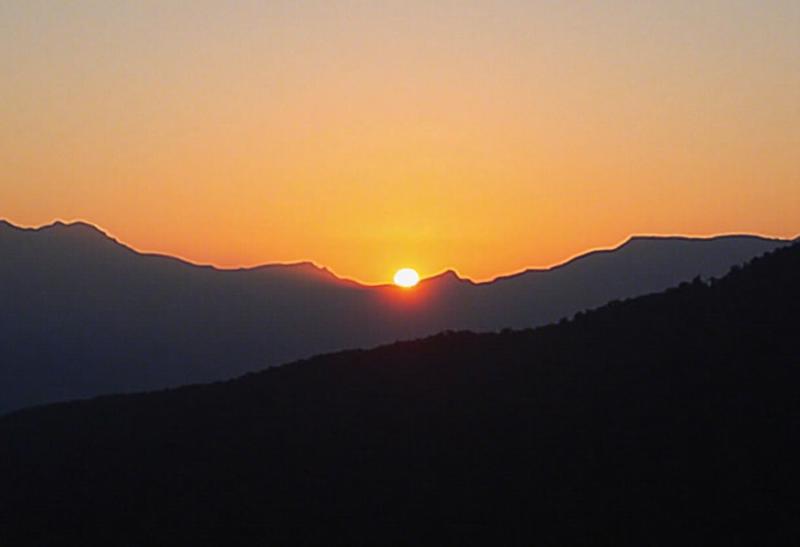
"Mountain landscape sunset"Art-Theory-Infused Prompt Example:
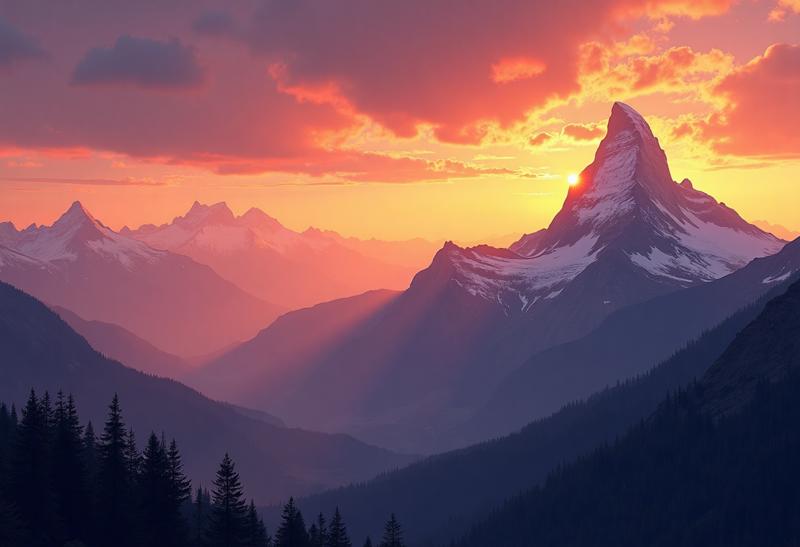
"a panoramic mountain scene at golden hour. Include atmospheric perspective with hazy distant peaks. The sky needs to be a vibrant mix of complementary orange and purple colors. Compose the image using the rule of thirds, with the main peak positioned on the right third. The desired mood is serene, and the style should be similar to that of Albert Bierstadt."Key Theories Applied: Lighting (Golden Hour), Perspective (Atmospheric), Color (Complementary, Temperature, Mood), Composition (Rule of Thirds, Panoramic), Style (Artist Reference).
Scenario: Portrait
Basic Prompt Example:
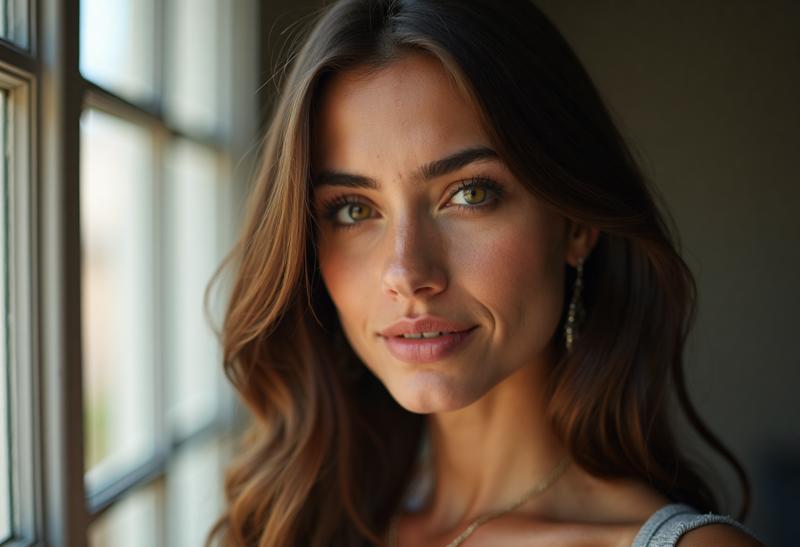
"Portrait of a woman"Art-Theory-Infused Prompt Example:
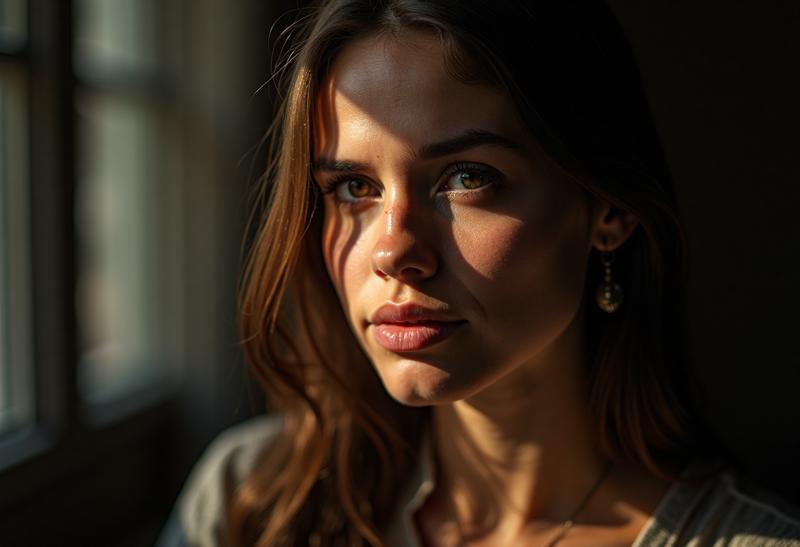
"a close-up portrait of a woman with a melancholic mood. It should feature Rembrandt lighting, showing the characteristic light triangle on her left cheek. Make sure the background is blurred using a shallow depth of field and that the image has high contrast values. The final piece should look like an oil painting with visible texture."Key Theories Applied: Lighting (Rembrandt, Contrast), Composition (Close-up, DoF), Value (High Contrast), Mood (Melancholy), Medium (Oil Painting), Texture.
Scenario: Abstract
Basic Prompt Example:
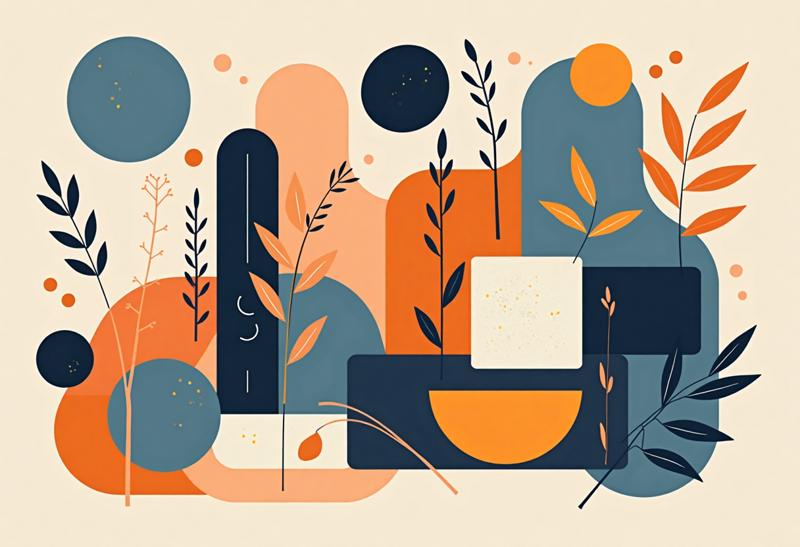
"Abstract shapes"Art-Theory-Infused Prompt Example:
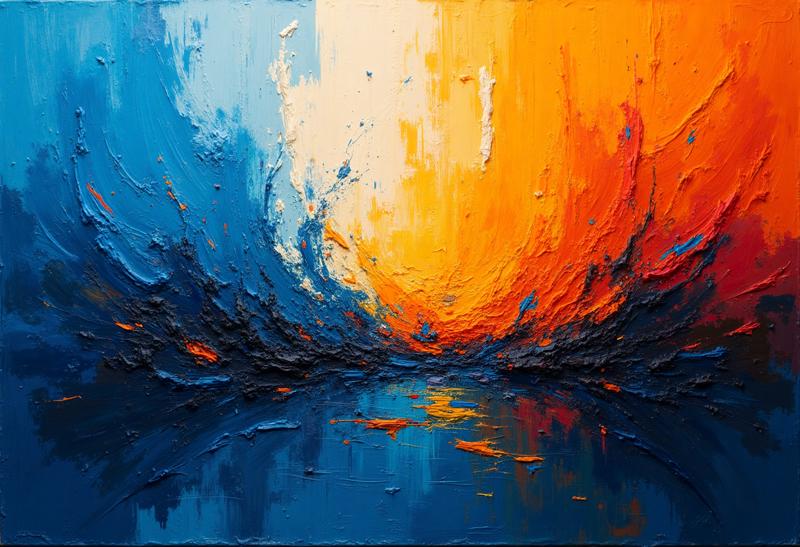
"An abstract painting in the style of abstract expressionism that conveys chaotic energy through dynamic, gestural strokes. Use high saturation, complementary colors of blue and orange. The composition should have asymmetrical balance, and the medium should be textured impasto."Key Theories Applied: Style (Movement), Mood (Energy), Technique (Gestural, Impasto), Color (Complementary, Saturation), Composition (Asymmetrical Balance), Texture.
Scenario: Fashion
Basic Prompt Example:
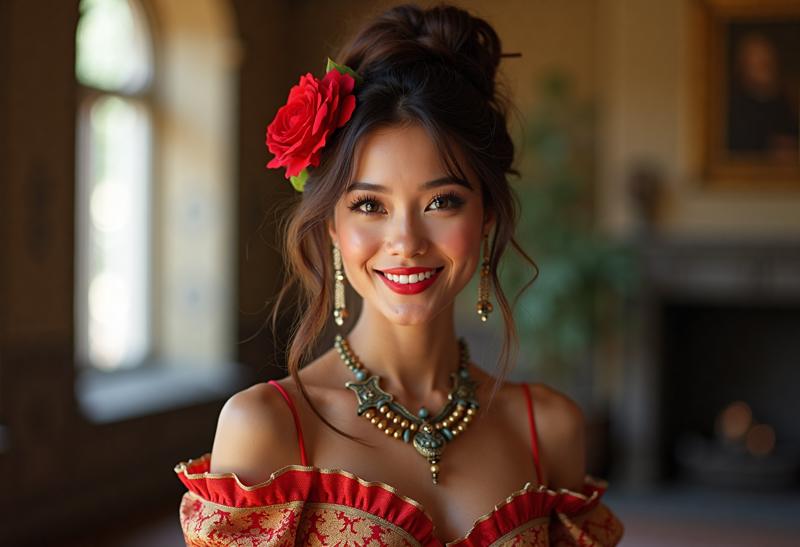
"Woman in a fancy dress"Art-Theory-Infused Prompt Example:
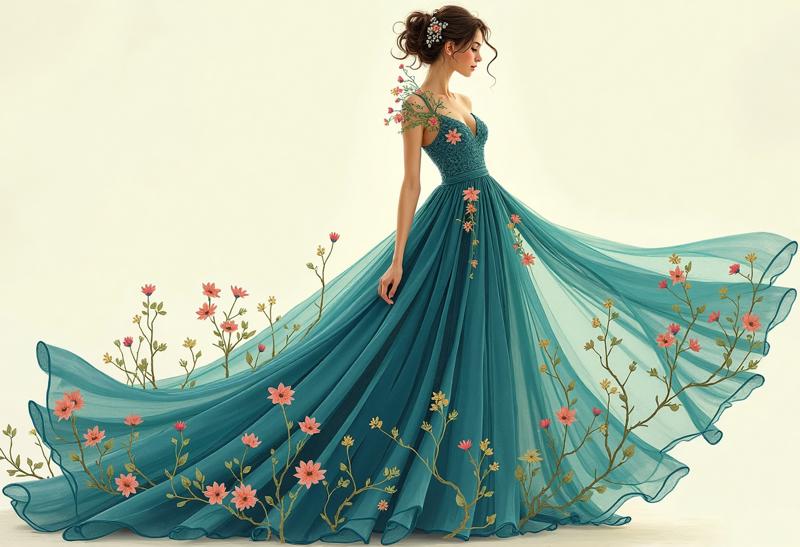
"a fashion illustration in the Art Nouveau style featuring a woman in a flowing gown with intricate floral patterns. Use an analogous cool color palette of blues and greens and soft, diffused lighting. The shot should be full body, emphasizing graceful lines."Key Theories Applied: Style (Movement, Fashion Illustration), Medium (Illustration), Pattern (Floral), Color (Analogous, Cool), Lighting (Soft), Composition (Full Shot), Emphasis (Lines), Movement (Flowing).
These examples demonstrate how specifying elements like lighting type, perspective effects, color harmonies, compositional rules, mood, medium, and artist/movement styles provides the Al with much richer guidance than simple subject descriptions.
9. Model Considerations: Notes on Flux, SDXL, Illustrious, HiDream
While the core principles of art theory apply universally to prompt crafting, the specific implementation, syntax, and nuances can vary significantly between different Al models. Understanding these differences is crucial for optimizing results. It's important to note that Al models evolve rapidly, so continuous experimentation remains key.
FLUX (Schnell & Dev):
Strengths: Known for strong adherence to prompts, coherence, and particularly adept at integrating text elements naturally within images. Responds well to detailed, structured prompts that tell a story or describe interactions within the scene. Supports blending multiple concepts and styles effectively. Image-to-prompt capabilities are also available.
Prompting Nuances: Does not support standard Stable Diffusion numerical prompt weighting (
keyword:1.x) or emphasis markers++. Instead, use natural language phrasing like"with emphasis on..."or"focusing on..."to guide attention. Be mindful of the "[dev] variant white background issue," which can cause blurry outputs; avoid the phrase "white background" or use workarounds. Logical, layered descriptions (foreground, background, etc.) work well. Active verbs and environmental details enhance results.Tips: Use clear, natural language. Experiment with both Schnell (faster) and Dev (potentially higher quality) versions. Iterate based on results.
SDXL (Stable Diffusion XL):
Strengths: A significant upgrade from earlier Stable Diffusion versions, offering higher native resolution (typically 1024x1024 or higher) and generally improved prompt understanding, sometimes requiring less complex prompts than predecessors. Benefits from a large ecosystem of fine-tuned models, LoRAs, and tools like ControlNet within interfaces like Automatic1111, ComfyUI, and Forge.
Prompting Nuances: Supports keyword weighting syntax like
(keyword:weight). UnderstandsANDorBREAKcommands for separating concepts or prompt chunks. Negative prompts are beneficial for quality control, though perhaps less essential than for SD v2. Prompt structure should still ideally include subject, medium, style, lighting, color, and composition details. Keywords referencing art platforms like Artstation can strongly influence style.Tips: Start simple and iterate, adding keywords gradually. Use specific terminology for style, lighting, and composition. Leverage negative prompts for refinement. Explore the vast range of community fine-tunes and LoRAs.
Illustrious XL:
Strengths: An SDXL-based model specifically fine-tuned for high-quality anime and illustration styles. Capable of generating at very high native resolutions (up to 1536x1536) without requiring hires fix techniques. Highly compatible with LoRAs designed for anime styles.
Prompting Nuances: Heavily influenced by its training on the Danbooru dataset, meaning it responds exceptionally well to Danbooru-style tags (e.g.,
long_hair,blue_eyes,1girl). While newer versions aim for better natural language understanding, combining descriptive phrases with specific tags is often the most effective approach. Quality tags (masterpiece,best quality) are often placed at the beginning, while composition tags (from above,cowboy shot) work well at the end. Use numerical tags for subject count (1girl,2boys) and thefocuskeyword for multiple distinct subjects. This model is reported to be very sensitive to negative prompts, making them highly effective for improving quality and accuracy.Tips: Prioritize Danbooru tags but supplement with natural language. Use negative prompts extensively. Ensure proper local setup if not using via a platform (requires specific Python/PyTorch/GPU setup).
HiDream:
Strengths: Features a hybrid architecture (Diffusion Transformer + Mixture of Experts) and utilizes multiple text encoders (including CLIP and large language models like Llama 3.1), potentially allowing for more nuanced prompt interpretation. Offers different versions (Full, Dev, Fast) trading off speed, quality, and VRAM requirements (Full needs >27GB, Dev ~16GB, Fast/GGUF Q2 ~8GB).
Prompting Nuances: Prompting strategies and parameters differ significantly between versions. The Full version benefits from negative prompts and higher CFG scales (e.g., 5.0), while the Dev and Fast versions are designed to run without negative prompts and at a low CFG scale (1.0). Sampler and scheduler settings also vary (e.g.,
uni_pcfor Full,lcmfor Fast). Requires specific node setups in ComfyUI (e.g., Load Diffusion Model or Unet Loader (GGUF), QuadrupleCLIPLoader, ModelSamplingSD3). Also accessible via APIs (Replicate, Falai) with specific authentication and request/polling mechanisms.Tips: Carefully select the version based on hardware and needs. Ensure the correct model files, node setup, and sampler/scheduler/CFG parameters are used for the chosen version. Pay close attention to whether negative prompts should be used for the specific version.
This model variability underscores that while art theory provides a universal framework for what to describe, the optimal how (syntax, parameters, negative prompt usage) requires adaptation to the specific Al tool being used. The choice of model itself might be influenced by the desired artistic style (e.g., Illustrious for anime) or the user's comfort with different prompting methods (tags vs. natural language) and technical setups. There appears to be a trend towards newer models improving natural language understanding, making prompting potentially more intuitive over time, although specific keywords and tags retain their power.
10. Conclusion: Integrating Artistry and Al
The fusion of traditional art theory with the capabilities of modern Al text-to-image generators offers a powerful pathway to creating more sophisticated, controlled, and aesthetically compelling visuals. By moving beyond simple descriptive prompts and actively incorporating principles of color, composition, lighting, perspective, and style, creators can transition from passively receiving Al outputs to actively directing the artistic process.
Applying concepts like complementary color harmonies, the rule of thirds, chiaroscuro lighting, or atmospheric perspective provides the Al with a structured framework, guiding it towards results that align more closely with the creator's intent. Understanding the elements of art (line, shape, value, etc.) provides the vocabulary, while the principles of design (balance, contrast, emphasis, etc.) offer the grammar for constructing visually coherent and impactful images. Negative prompts, used judiciously, further refine the output by explicitly excluding undesirable elements, often based on an understanding of what detracts from good artistic practice.
Art theory should not be viewed as a set of rigid constraints, but rather as a versatile toolkit that multiplies creative potential within the Al medium. It provides a language for articulating complex visual ideas that Al can interpret and execute, potentially boosting creative productivity and the perceived value of the generated work. The process is often iterative, involving experimentation, prompt refinement, and sometimes post-processing, highlighting that Al art generation at a high level is a workflow, not just a single command.
Mastering theory-driven prompting is an ongoing journey of learning and practice. As Al models continue to evolve, understanding the timeless principles of visual art will remain a crucial skill for anyone seeking to harness these powerful tools for genuine artistic expression. The combination of informed human artistry and increasingly capable Al execution promises to continue pushing the boundaries of visual creation.




